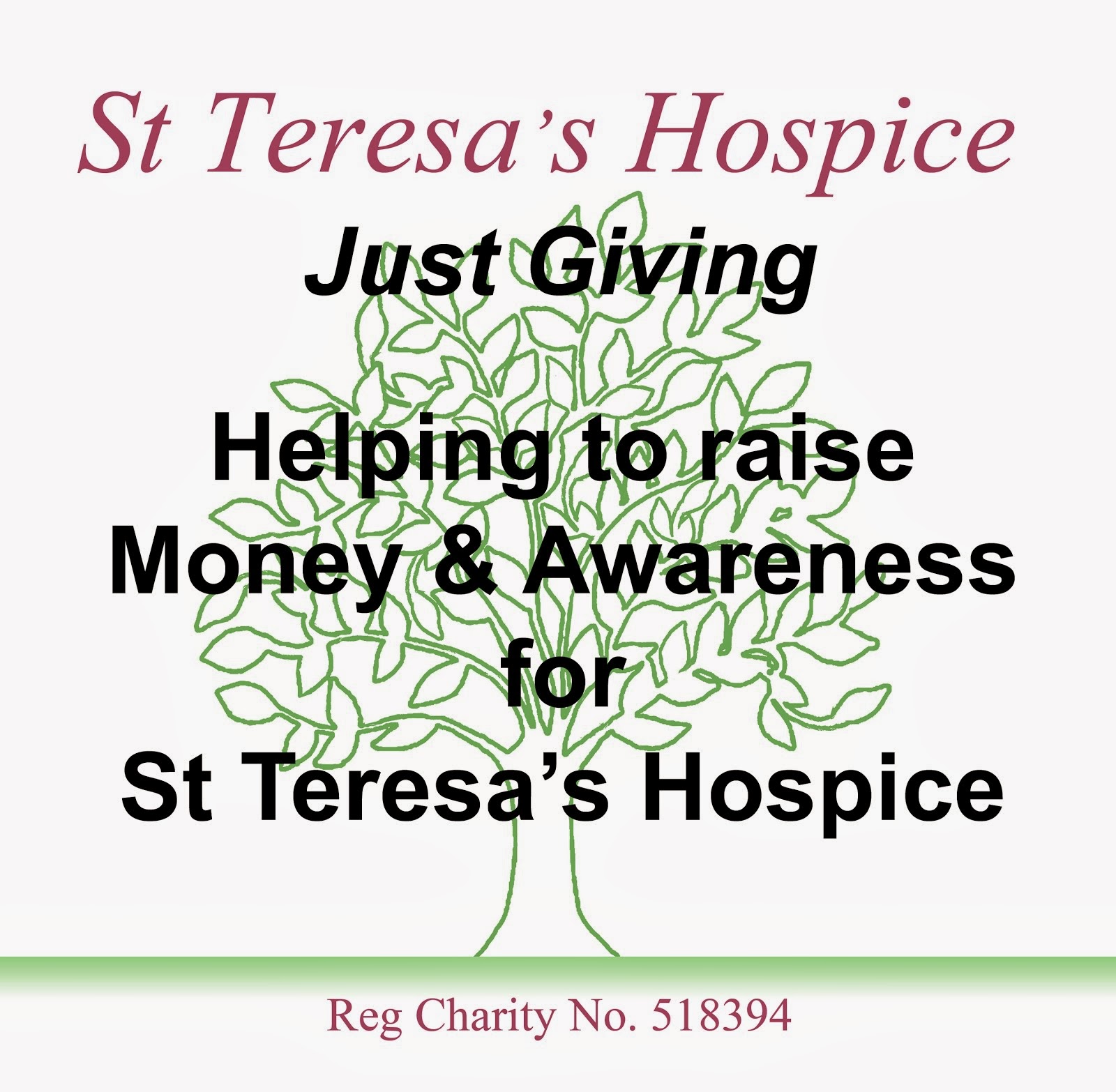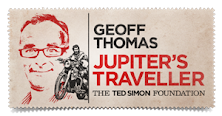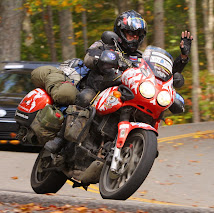It was a good day to ride, and according to the team from Top Gear, this was the best driving road anywhere in the world. The Transfagrasan Highway …… lets see
 The first thing I noticed was that the road surface wasn’t great. Potholes everywhere, running streams and washes of gravel on every blind bend. The second thing I noticed was that I simply didn’t give a shit. Screw Ceausescu wanting to move his heavy armour quickly across Transylvania, this road was made for bikes. Enthusiasm takes over, the Transylvania Live guide disappears in the BMW's mirrors and the fun begins.
The first thing I noticed was that the road surface wasn’t great. Potholes everywhere, running streams and washes of gravel on every blind bend. The second thing I noticed was that I simply didn’t give a shit. Screw Ceausescu wanting to move his heavy armour quickly across Transylvania, this road was made for bikes. Enthusiasm takes over, the Transylvania Live guide disappears in the BMW's mirrors and the fun begins.
 Thanks to Top Gear, this road has apparently become notoriously busy at the weekends. Today’s Sunday and it’s relatively quiet, so I guess they must mean ’busy’ in Romanian terms. What traffic there is seems very European. Cars see you coming from behind and pull to the side to let you pass unhindered. It‘s a beautiful thing but it certainly hasn‘t caught on in Blighty.
Thanks to Top Gear, this road has apparently become notoriously busy at the weekends. Today’s Sunday and it’s relatively quiet, so I guess they must mean ’busy’ in Romanian terms. What traffic there is seems very European. Cars see you coming from behind and pull to the side to let you pass unhindered. It‘s a beautiful thing but it certainly hasn‘t caught on in Blighty.
Just below the snowline, I stopped for a giggle and photographs. I’ve no idea how high the road had climbed, but it didn’t really matter, it’s just never ending. Around every corner there’s another mountain to conquer and more smiles to enjoy.
 Just when you think that things can’t get any better, they do. It’s like riding into a photograph that you recognise. Hairpin bend after hairpin bend, climbing into the snow and clouds. The sight lines are perfect and all of the road is there to use. You don’t need to ride fast and it doesn’t really matter what your riding, it’s all just spectacularly good.
Just when you think that things can’t get any better, they do. It’s like riding into a photograph that you recognise. Hairpin bend after hairpin bend, climbing into the snow and clouds. The sight lines are perfect and all of the road is there to use. You don’t need to ride fast and it doesn’t really matter what your riding, it’s all just spectacularly good.
 Just when you think that things can’t get any better, they do. It’s like riding into a photograph that you instantly recognise. Hairpin bend after hairpin bend, climbing up beyond the clouds and into the snow. The sight lines are perfect and all of the road is there to be used. You don’t need to ride quickly and it doesn’t really matter what bike your riding, it’s all just spectacularly good.
Just when you think that things can’t get any better, they do. It’s like riding into a photograph that you instantly recognise. Hairpin bend after hairpin bend, climbing up beyond the clouds and into the snow. The sight lines are perfect and all of the road is there to be used. You don’t need to ride quickly and it doesn’t really matter what bike your riding, it’s all just spectacularly good.
You reach the top and stop for lunch and coffee. It is the top but it isn’t. It’s just one of many tops along 90 Km of motorcycling utopia and the best thing about reaching the end of the Tranfragasan Highway, is turning around and doing it all again in reverse. Top Gear consider this to he the best driving road in the world and when it comes to supercars, they might well be right. Is it the best biking road in the world? I've no idea, but if I made a list of the greatest roads that I've ever ridden then the Transfragasan Highway would certainly be on it .... and quite close to the top.
 At the risk of sounding like a whining actor, I really didn’t want to go. I had a preconceived notion that while Transylvania would be fantastic, guided touring would probably be an experience to forget. A week spent visiting places that were of interest to other people and keeping to somebody else’s timetable. I ride bikes because of the freedom and the whole idea of following an official guide filled me with anything but enthusiasm.
At the risk of sounding like a whining actor, I really didn’t want to go. I had a preconceived notion that while Transylvania would be fantastic, guided touring would probably be an experience to forget. A week spent visiting places that were of interest to other people and keeping to somebody else’s timetable. I ride bikes because of the freedom and the whole idea of following an official guide filled me with anything but enthusiasm. Maybe all guided tours are different, but my initial worries were totally unfounded. The guides at Transylvania Live were simply fonts of local knowledge and the style of riding was entirely up to you. As fast or as slow as you like. You knew where the next stopping point was located and how quickly you got there was up to you. No matter how long the convoy of bikes, at it’s rear was the support vehicle carrying all of the luggage. Nobody gets lost and without the guides, the things that were of most interest would have been easily missed.
Maybe all guided tours are different, but my initial worries were totally unfounded. The guides at Transylvania Live were simply fonts of local knowledge and the style of riding was entirely up to you. As fast or as slow as you like. You knew where the next stopping point was located and how quickly you got there was up to you. No matter how long the convoy of bikes, at it’s rear was the support vehicle carrying all of the luggage. Nobody gets lost and without the guides, the things that were of most interest would have been easily missed. Everyday Romania surprised me with something quite amazing and just when I thought that all of the surprises have been revealed, it presented me with something quite new. In the small village of Sapanta, we came across the Merry Cemetery. A cemetery attached to a church, but a cemetery like no other that I’ve ever seen. Each of the eight hundred burial plots is marked by a carved wooden plaque with a painting depicting the life of the incumbent below. Each plaque also has a story written in the first person and one that caught my eye was for a three year old girl: ‘’1995-1998 I am Anita of Nafur and I leave my parents with sorrow in the their hearts. They no longer sing in their vineyards because I was hit by a car. But my parents should not have sad hearts because God has simply taken me to his bosom’’. In stark contrast to most European cultures, the Merry Cemetery is a celebration of life and along with the generous warmth of the Romanian people, it is something that I will always remember.
Everyday Romania surprised me with something quite amazing and just when I thought that all of the surprises have been revealed, it presented me with something quite new. In the small village of Sapanta, we came across the Merry Cemetery. A cemetery attached to a church, but a cemetery like no other that I’ve ever seen. Each of the eight hundred burial plots is marked by a carved wooden plaque with a painting depicting the life of the incumbent below. Each plaque also has a story written in the first person and one that caught my eye was for a three year old girl: ‘’1995-1998 I am Anita of Nafur and I leave my parents with sorrow in the their hearts. They no longer sing in their vineyards because I was hit by a car. But my parents should not have sad hearts because God has simply taken me to his bosom’’. In stark contrast to most European cultures, the Merry Cemetery is a celebration of life and along with the generous warmth of the Romanian people, it is something that I will always remember.

































